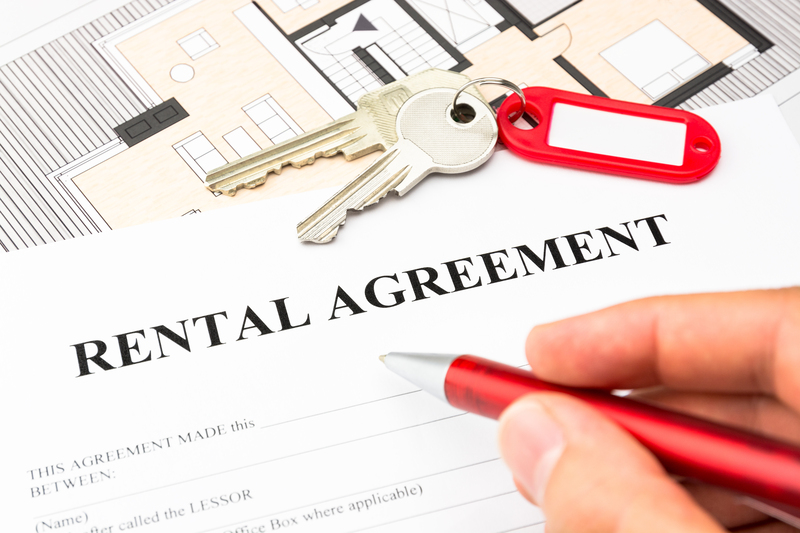How to Disassemble and Reassemble Your Bed for a Smooth Move
Moving to a new home can be both exciting and stressful. Among the furniture pieces that often present challenges during a move, your bed is likely near the top of the list. Knowing how to disassemble and reassemble your bed for a smooth move is essential to ensure your furniture--and your peace of mind--makes it to your new destination untouched and ready for a good night's sleep.
In this comprehensive guide, we'll walk you through every step--from preparation and disassembly to protective packing and reassembly in your new space. This SEO-optimized article will cover different bed types, answer frequently asked questions, and share expert tips for a stress-free move. Let's dive in!
Why Disassembling Your Bed Properly Is Important
- Prevents Damage: Beds are bulky and prone to dings or breaks if moved whole.
- Eases Transportation: Disassembled pieces are easier to maneuver through doors and tight spaces.
- Ensures Safety: Properly dismantling reduces the risk of injury to you and damage to your home.
- Saves Time and Energy: Knowing the correct process can help you avoid unnecessary stress and confusion on moving day.

Tools and Supplies Needed for Bed Disassembly
Before you begin, gather the necessary tools and materials for a seamless process:
- Phillips-head and flathead screwdrivers
- Allen (hex) wrenches
- Pliers
- Adjustable wrench or socket set
- Ziploc bags or small containers for screws/bolts
- Markers and sticky notes for labeling
- Protective padding (moving blankets, bubble wrap)
- Packing tape
Pro Tip:
Take photos during each step to use as a reference while reassembling your bed later!
How to Disassemble Your Bed Frame for Moving
1. Clear Off and Strip the Bed
Remove all bedding including sheets, pillows, mattress covers, and comforters. Pack these separately, making sure everything is clean and dry to prevent mold or unpleasant smells.
2. Remove the Mattress and Box Spring
Carefully lift the mattress and then the box spring off the bed frame. Mattresses can be heavy or floppy--use two people if possible. Once removed, cover them with mattress bags or plastic wrap for protection.
3. Disassemble the Bed Frame
Standard Metal Bed Frames
- Locate the bolts or screws that hold the frame together.
- Using the appropriate screwdriver or wrench, loosen and remove all hardware.
- Label each piece and all fasteners. Place hardware in a labeled bag and tape it to the frame or place it in a clearly marked moving box.
Wooden Bed Frames
- Check for visible screw or bolt locations; often, they're on the inside near the connection points.
- Take the frame apart piece by piece--headboard, footboard, sideboards, center support, and slats.
- If using wooden or metal slats, stack and bundle them for easy transport. Mark ends if needed for the correct placement during reassembly.
Platform and Storage Beds
- Remove any drawers, lift-up storage, or platform slats first.
- Disassemble the main frame and label each part, taking extra care with any mechanical parts or brackets.
4. Organize and Label All Parts
Use stickers, masking tape, or sticky notes to label each bed part so you know which end is the top/bottom/left/right. This is especially important for beds with multiple similar-looking pieces!
- Place all nuts, bolts, and hardware in a small Ziploc bag. Label the bag with the bed's name or room ("Master Bed Hardware") and tape it to a large bed component or pack it with other hardware in a designated hardware box.
5. Protect All Disassembled Pieces
- Wrap the headboard, footboard, and rails in moving blankets or bubble wrap.
- Secure slats and small components together with plastic wrap or straps so nothing gets lost during transport.
Special Considerations for Unique Bed Types
Disassembling Adjustable Beds
- Unplug all power cords and remove the backup battery if present.
- Detach the mattress and follow your manufacturer's instructions for moving the base safely.
- Wrap the electronics and wiring to avoid tangling or damage.
Handling Bunk Beds and Loft Beds
- Remove ladders, guardrails, and the upper mattress first.
- Disassemble the top bunk before the bottom, taking care with tall pieces to avoid tipping.
- Label and organize hardware for each layer or section separately.
Canopy and Four-Poster Beds
- Carefully remove canopy rods or top crossbars before detaching the posts and frame.
- Wrap decorative parts for added protection.
Packing and Transporting Bed Parts
Once your bed is safely disassembled, it's time to prepare each piece for the move:
- Mattress: Use a waterproof mattress bag. Stand vertically for easier transport unless the manufacturer instructs otherwise.
- Headboards/footboards: Bubble wrap or moving pads protect against scratches.
- Slats and side rails: Bundle and secure together; wrap if painted or delicate.
- Hardware: Always travel with the hardware bag(s) in your essentials kit--don't risk losing it in a moving truck.
Reassembling Your Bed After the Move
The final step in moving your bed smoothly is to put it back together. With proper labeling and organization, reassembly should be straightforward:
1. Prepare the New Space
- Choose your desired location, considering window placement, outlets, and walking space.
- Clean the floor and walls before assembling the bed.
2. Reference Your Photos and Notes
Review any pictures or notes you took during disassembly. Lay out all parts and hardware for easy access.
3. Assemble the Frame
- Start with the headboard and footboard, attaching side rails next.
- Secure every joint with the original hardware, tightening screws and bolts carefully to avoid stripping.
- Install center supports and slats or platform boards as required.
4. Replace the Mattress and Bedding
- Lift the box spring and mattress into place, using two people for heavy items.
- Put on clean sheets, arrange pillows, and enjoy your freshly set-up bed.
Note:
Allow your mattress time to air out if it was wrapped in plastic.
Tips for a Hassle-Free Bed Moving Experience
- Invest in proper packing materials: Moving blankets, straps, and plastic wrap can prevent accidents and keep parts organized.
- Avoid overtightening hardware: This can damage wood or strip bolts. Tighten just enough to secure the structure.
- Keep children and pets away: While disassembling or reassembling, ensure safety for little ones and furry friends.
- Consult manufacturer instructions: If you're unsure about your specific bed model, check the manual or call the manufacturer for advice.
- Ask for help: Beds are heavy and awkward--use an extra set of hands!

Frequently Asked Questions About Disassembling and Reassembling Beds for Moving
Do all beds need to be disassembled before moving?
Not all, but most beds with a frame, headboard, or large components will be much easier (and safer) to move when taken apart.
What can I do if I lose some of the bed hardware?
Check if your bed's brand sells replacement kits, or go to a hardware store with another bolt/screw as a sample. Keep spares in your moving kit just in case!
How long does it take to disassemble and reassemble a bed?
Disassembly typically takes 30 to 60 minutes, depending on the complexity. Reassembly at your new home should take a similar amount of time if parts are labeled and organized.
Can I move my bed without dismantling it?
Very small beds (like toddler or trundle beds) might be moved whole if doorways allow. For queen-size and larger beds, or beds with complex frames, disassembly is almost always required.
Is it worth hiring professionals to disassemble and reassemble my bed?
If you have a particularly expensive or intricate bed (e.g., antiques or built-in storage), hiring professionals can provide peace of mind. For most standard beds, following the steps in this guide should be sufficient.
Conclusion: Ensuring a Smooth Bed Move
Knowing how to dismantle and reassemble your bed can save you significant time, stress, and money on moving day. Preparation is key: gather your tools, label each part, and protect the pieces for transit. With careful planning and a methodical approach, you'll be rewarded with an intact, sturdy bed that's ready for restful nights in your new home.
We hope this step-by-step article has been both informative and useful. If you have your own bed moving tips or questions, leave a comment below--happy moving!



